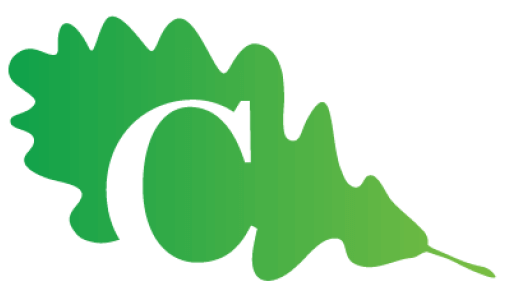 The Monarch, one of our favorite backyard visitors, is disappearing. Their habitat ranges the 3,000 miles they travel on their annual migration from their winter home in Mexico up to Canada. They need a steady supply of blooming plants to fuel their long journey, access to which has been broken up by miles of monoculture and concrete. They only lay their eggs on milkweed, and the loss of this important prairie plant has added to their struggle.
But Monarchs aren’t the only pollinator in trouble. There are 3,500 species of bees and 700 species of butterflies native to North America, and 40% of the native insect pollinators are risking extinction. Pollinators are responsible for 1/3 of our food crops, so humans have a special stake in the survival of pollinator species. Habitat loss, reduced access to food resources, disease, and excessive pesticide use have all contributed to the population decline.
The Monarch, one of our favorite backyard visitors, is disappearing. Their habitat ranges the 3,000 miles they travel on their annual migration from their winter home in Mexico up to Canada. They need a steady supply of blooming plants to fuel their long journey, access to which has been broken up by miles of monoculture and concrete. They only lay their eggs on milkweed, and the loss of this important prairie plant has added to their struggle.
But Monarchs aren’t the only pollinator in trouble. There are 3,500 species of bees and 700 species of butterflies native to North America, and 40% of the native insect pollinators are risking extinction. Pollinators are responsible for 1/3 of our food crops, so humans have a special stake in the survival of pollinator species. Habitat loss, reduced access to food resources, disease, and excessive pesticide use have all contributed to the population decline.
The Good News
 Urban pollinator populations can be just as healthy as rural populations, with help from home landscapes. Any site can be a habitat, from a few pots on a balcony to acres of pristine prairie. Native bees can often survive in small gardens, carrying nectar and pollen back and forth to their nests in the soil and hollow stems. But connecting these small habitats is key to aiding migratory species and reducing inbreeding, which can lead to extinction.
Urban pollinator populations can be just as healthy as rural populations, with help from home landscapes. Any site can be a habitat, from a few pots on a balcony to acres of pristine prairie. Native bees can often survive in small gardens, carrying nectar and pollen back and forth to their nests in the soil and hollow stems. But connecting these small habitats is key to aiding migratory species and reducing inbreeding, which can lead to extinction.The Ultimate Low-Maintenance Landscape
 The first step to creating a pollinator garden (or any landscape!) is knowing your site. Dig into your soil: is it heavy clay, fertile loam, or loose sand? Do you have full sun or shady patches? How does rain move through your property? A little site analysis before you plant can help reduce the amount of maintenance necessary and reduce reliance on chemical fertilizers and sprinkler systems.
Pollinators thrive in messy landscapes. Weeds like dandelions, clover, and violets are great sources of nectar, especially early in the spring before other flowers are blooming. Holding off on bed clean-up until late winter also adds value to your habitat. Leaf litter and dormant perennials are great hiding spots for a winter chrysalis. Broken, hollow branches and grasses are perfect nests for solitary bees.
The first step to creating a pollinator garden (or any landscape!) is knowing your site. Dig into your soil: is it heavy clay, fertile loam, or loose sand? Do you have full sun or shady patches? How does rain move through your property? A little site analysis before you plant can help reduce the amount of maintenance necessary and reduce reliance on chemical fertilizers and sprinkler systems.
Pollinators thrive in messy landscapes. Weeds like dandelions, clover, and violets are great sources of nectar, especially early in the spring before other flowers are blooming. Holding off on bed clean-up until late winter also adds value to your habitat. Leaf litter and dormant perennials are great hiding spots for a winter chrysalis. Broken, hollow branches and grasses are perfect nests for solitary bees.
Nectar + Pollen
 When selecting plants for pollinator habitats, diversity is key. Different flowers provide nectar (a source of sugar) and pollen (a source of protein). Vary the flower colors to attract different pollinators: bees are more attracted to white, yellow, and blue, while butterflies tend to like bright reds and purples. Vary the bloom time so there’s an available food source throughout the growing season. Native plants have the best nectar and pollen sources, and tend to support the most diversity in species. Cluster plants in groups of 3 or 5 so pollinators don’t have to relearn how to enter each flower as they buzz from plant to plant. Here’s a quick list to start off your pollinator landscape. Look for the butterfly on the signs in our stores to indicate plants that support pollinators!
Spring Bloomers:
Amsonia
False Indigo
Pasqueflower
Prairie Smoke
Early Summer Bloomers:
Coreopsis (try the native Lanceleaf)
Coneflowers (try the native Pale Purple Coneflower!)
Leadplant
Missouri Primrose
Purple Poppy Mallow
Late Summer Bloomers:
Allium
Agastache
Black Eyed Susans
Gayfeather (try the native Rough Blazing Star!)
Goldenrod
Joe Pye Weed
Mexican Hat
Milkweed
Prairie Clover
Yarrow
Fall Bloomers
Aster
False Sunflower
Gentian
Iron Weed
Sneezeweed
When selecting plants for pollinator habitats, diversity is key. Different flowers provide nectar (a source of sugar) and pollen (a source of protein). Vary the flower colors to attract different pollinators: bees are more attracted to white, yellow, and blue, while butterflies tend to like bright reds and purples. Vary the bloom time so there’s an available food source throughout the growing season. Native plants have the best nectar and pollen sources, and tend to support the most diversity in species. Cluster plants in groups of 3 or 5 so pollinators don’t have to relearn how to enter each flower as they buzz from plant to plant. Here’s a quick list to start off your pollinator landscape. Look for the butterfly on the signs in our stores to indicate plants that support pollinators!
Spring Bloomers:
Amsonia
False Indigo
Pasqueflower
Prairie Smoke
Early Summer Bloomers:
Coreopsis (try the native Lanceleaf)
Coneflowers (try the native Pale Purple Coneflower!)
Leadplant
Missouri Primrose
Purple Poppy Mallow
Late Summer Bloomers:
Allium
Agastache
Black Eyed Susans
Gayfeather (try the native Rough Blazing Star!)
Goldenrod
Joe Pye Weed
Mexican Hat
Milkweed
Prairie Clover
Yarrow
Fall Bloomers
Aster
False Sunflower
Gentian
Iron Weed
Sneezeweed
Larval Plants
 Butterfly gardens aren’t just about nectar. Butterflies select specific host plants to lay their eggs so their larvae will have plenty to munch on when they hatch. Monarchs lay their eggs on milkweed. To attract Blues, use plants from the bean family. Swallowtails like the parsley and willow families, and Skippers lay their eggs on bluestems and switchgrasses. Tall grasses and shrubs will also help provide shelter from the wind. (Bonus: Ruby Throated Hummingbirds love tallgrass habitats, too!)
Butterfly gardens aren’t just about nectar. Butterflies select specific host plants to lay their eggs so their larvae will have plenty to munch on when they hatch. Monarchs lay their eggs on milkweed. To attract Blues, use plants from the bean family. Swallowtails like the parsley and willow families, and Skippers lay their eggs on bluestems and switchgrasses. Tall grasses and shrubs will also help provide shelter from the wind. (Bonus: Ruby Throated Hummingbirds love tallgrass habitats, too!)Water + Sunshine
 Leave some ground bare for nesting sites, and place a few flat stones around your garden to serve as resting spots for insects to soak up some sun. Provide water using a shallow dish with sloping sides or filled with stones so insects can drink without falling in. You can even allow mud to form: butterflies can suck moisture out of the mud!
Leave some ground bare for nesting sites, and place a few flat stones around your garden to serve as resting spots for insects to soak up some sun. Provide water using a shallow dish with sloping sides or filled with stones so insects can drink without falling in. You can even allow mud to form: butterflies can suck moisture out of the mud!Get Connected
 There are lots of ways to get connected with other pollinator lovers around the country! Your yard can be certified as a pollinator habitat from the University of Nebraska, and log your efforts with the Million Pollinator Garden Challenge. To learn more, check out our friends at the UNL Bee Lab and the information distributed by the Xerces Society.
There are lots of ways to get connected with other pollinator lovers around the country! Your yard can be certified as a pollinator habitat from the University of Nebraska, and log your efforts with the Million Pollinator Garden Challenge. To learn more, check out our friends at the UNL Bee Lab and the information distributed by the Xerces Society.


